Triban 120 Gravel Bike review - value? It's a whole bike for less than a Garmin Edge 1040 Solar headunit
Well executed for the price point. But if you can afford to spend a couple of hundred more – then do
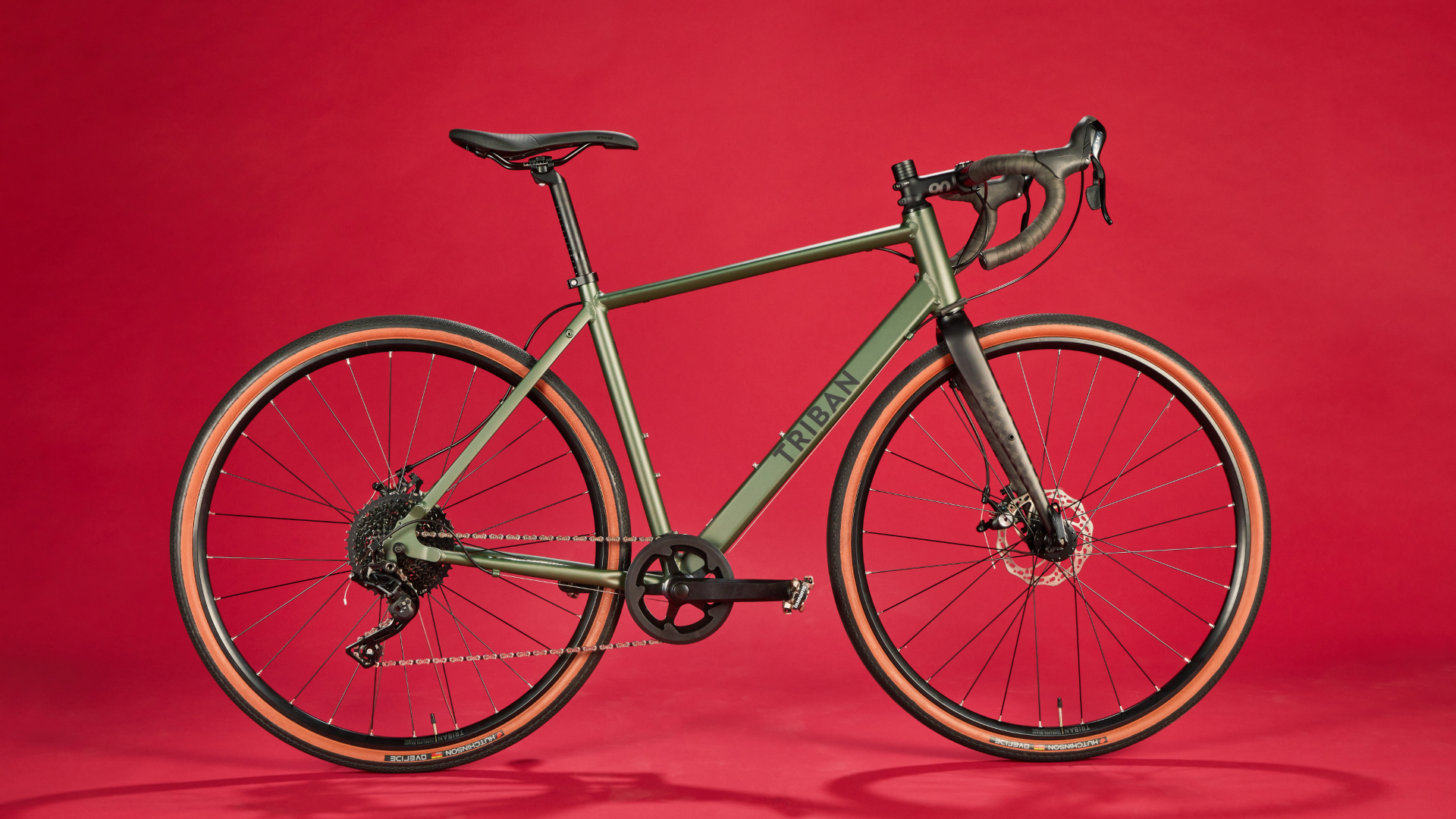
The Triban 120 Gravel Bike offers great functionality for its price, offering a gateway into gravel or for being pressed into service as a comfy commuter. There are some limitations, though. The Triban 120 Gravel Bike isn’t well suited for particularly rough or long-distance rides off-road, and more powerful commuters will be frustrated by the relatively low largest gear.
-
+
Very cheap
-
+
Wide range of gears
-
+
Plenty of mounts
-
+
Carbon fork
-
-
Not quite a do-it-all gravel bike
-
-
Very heavy
-
-
Underwhelming brakes
You can trust Cycling Weekly.

The Triban 120 Gravel Bike is one of the very cheapest gravel bikes on the market - which makes it quite an interesting proposition for a wide range of people. From those who are at the very start of their cycling lives to those looking to expand their stable, gravel bikes are highly versatile – so there’s generally an excuse for one.
Now, for all bikes – other than those at the very top of the price spectrum – every comment gets qualified with ‘for the price’. For instance, it’s not a downside that bikes which cost a grand come without electronic groupsets - but quintuple the price, then I would strongly raise an eyebrow if a mechanically actuated groupset was specced (baring Campagnolo’s Ekar groupset of course).
With the Triban 120 Gravel Bike, this is especially the case. Obviously this bike isn’t going to be the very pinnacle of cycling performance, it’s what it does manage to do for the price that’s important – and this is what makes it one of the best budget gravel bikes.
Triban 120 Gravel Bike: the build
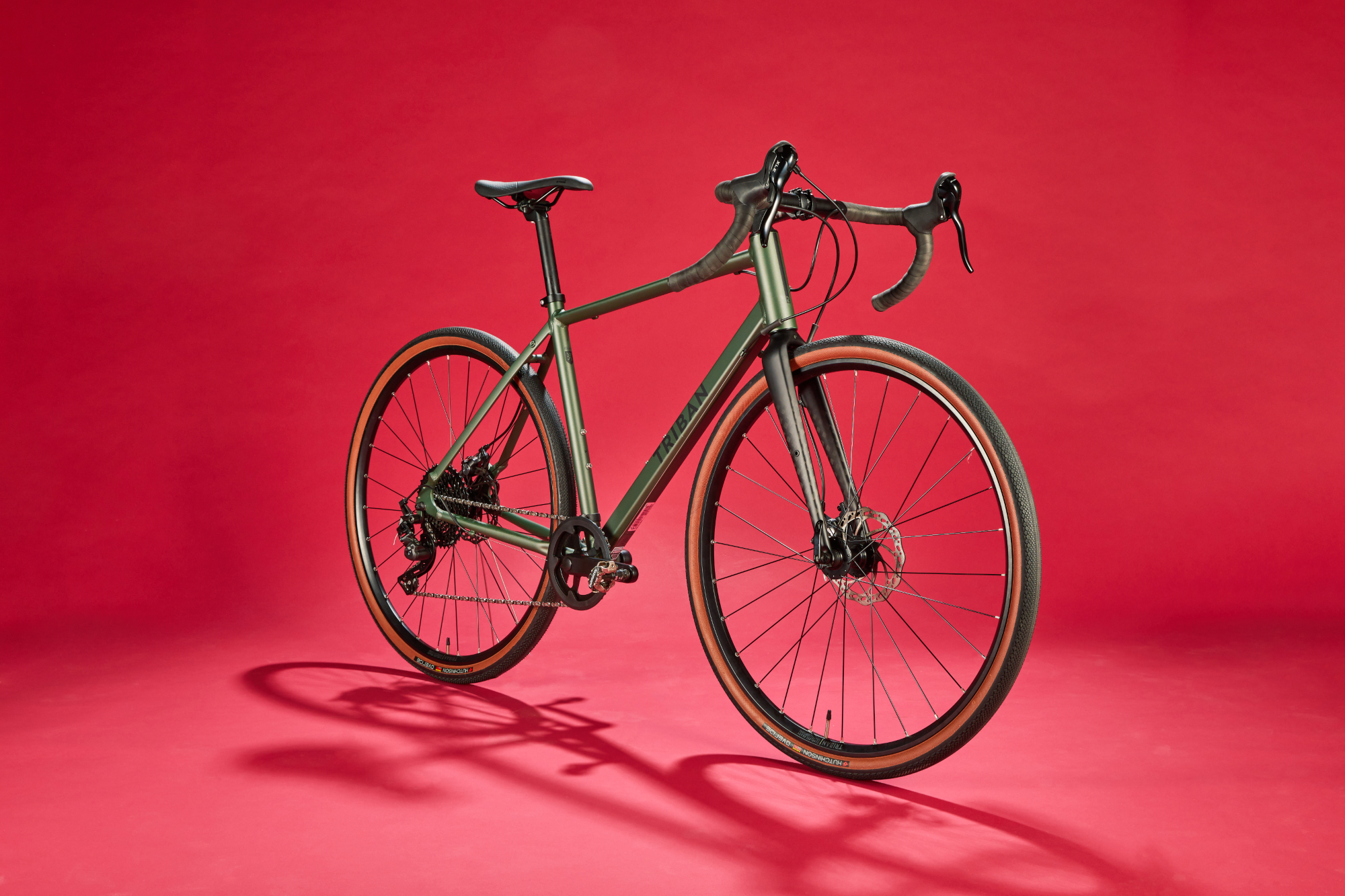
At the heart of the bike is the Triban aluminium frame. This has a lot to offer in terms of practicality. There are mounts for mudguards and pannier racks, the bottom bracket is threaded and the geometry is quite upright and relaxed.
The cable routing is external too, which helps for quick maintenance - although the fact the cables are exposed around the bottom bracket does mean that very muddy rides can gum up the shifting.
There are some downsides, though. For a gravel bike, it doesn’t have the extra mounts we’ve now come to expect. No underside of the downtube mounts for storing a weighty tool keg down low and no mounts on the toptube for a bento box.
Obviously, I’m not expecting any features such as Orbea, Trek and Specaizlied’s integrated storage systems inside the frame - you’d need a carbon tubing for a start - but drilling those extra holes shouldn’t add much to the construction cost.
Finally on the frame, the aesthetics. Of course, there’s a place for practicality, and the looks don’t affect that aspect too greatly. Nevertheless, that angular downtube, meaty welds and the straight steerer tube just don’t look very smart.
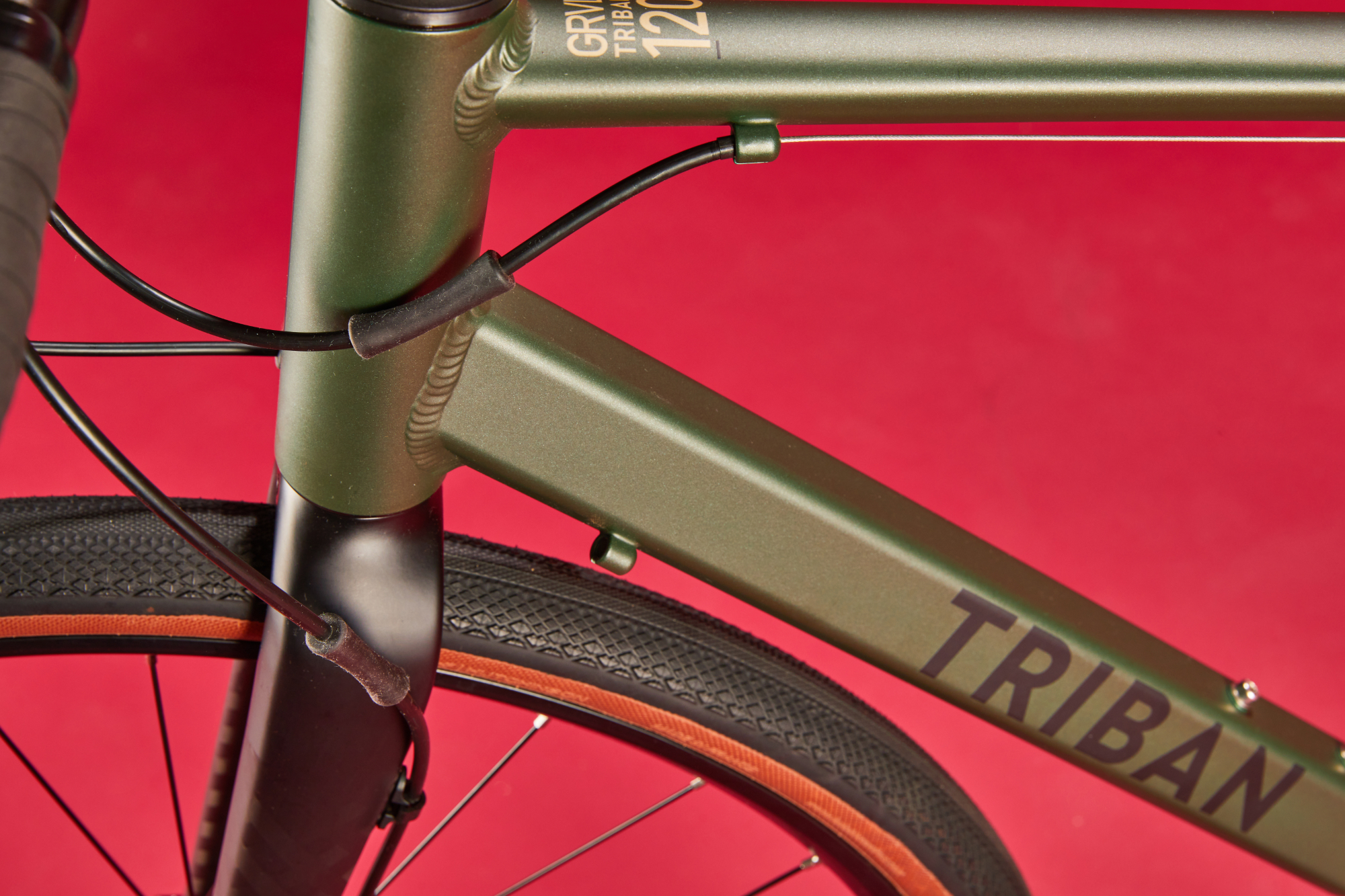
That said, the fork is carbon, which is highly impressive for a bike at this price point. It doesn’t have triple mounts for a cargo cage, but it does have one for a front pannier and can take up to 9kg - not much, but something at least.
Regarding the rest of the bike, the 1x10 drivetrain is from MicroShift - a brand often specced on cheaper models - and consists of a 38t chainring with an 11-42t cassette. The rear derailleur has a built in clutch to keep the chain under tension and - most importantly - on the chainring. There’s also a discrete chain-guard as well.
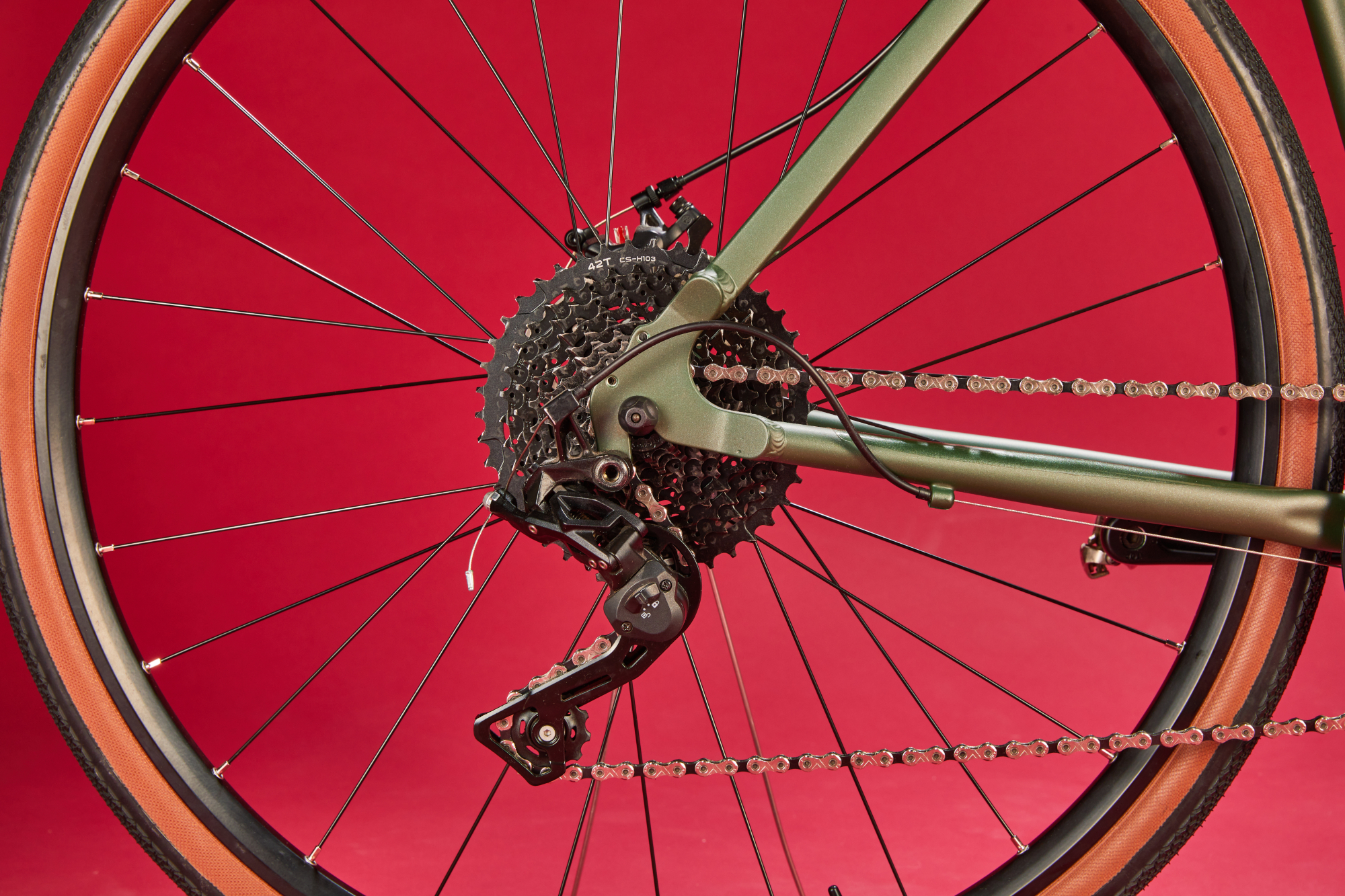
The brakes are the Promax DSK, which - like most mechanical disc brakes - are single-sidedly actuated. The brake outers are Jagwire’s KEB-SL compressionless model - which is good to see as cheaper housing can really negatively impact mechanical braking performance.
The wheels are the eponymous Triban Tubeless ready 700c wheels, which come set up with tubeless rim tape - all you need is a set of valves and some sealant to make the conversion. The internal diameter is 23mm, which is quite generous for a gravel bike of this price point and makes a good match for the Hutchinson Override 38mm semi slick tyres.
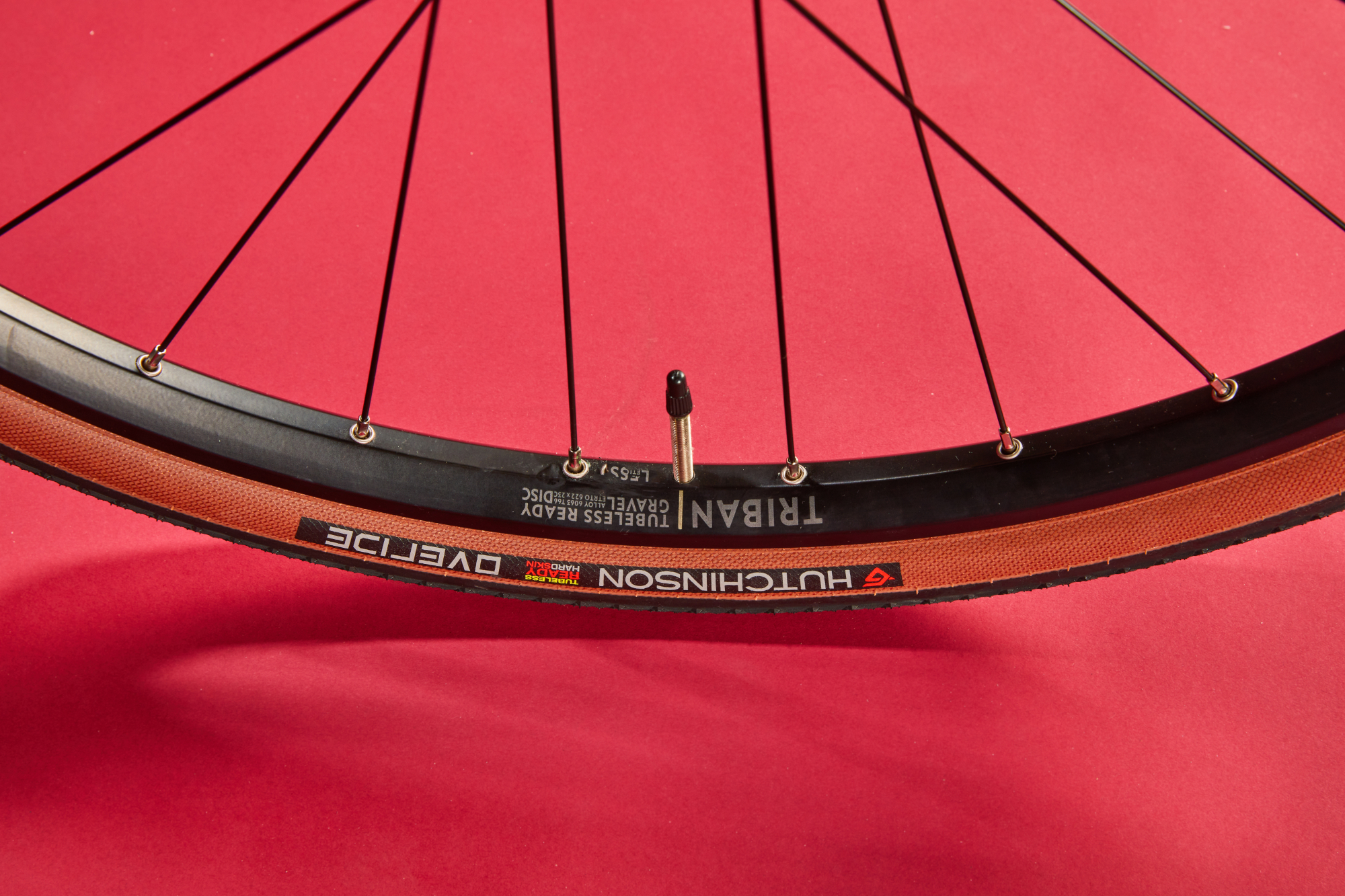
Triban 120 Gravel Bike: the ride
I think the ride should be considered in two parts - gravel and commuting. Although its name is gravel, the price point and certain elements of the spec (and the fact I’ve seen so many around in a variety of cities) points to urban utility use as well.
For gravel, the Triban 120 Gravel Bike was a pleasure on more moderate trails. The gear range was generous even for steep climbs (particularly handy, considering the weight of the bike) and the semi slick tyres felt quite efficient when tapping along on the flatter sections.
On rougher trails, the bike did get pinged about quite a bit. Plus, with a combination of that small chainring, the angle of the chainstays - and probably the function of the clutch mech as well - there was a noticeable amount of chainslap (although the chain never slipped off the ring).
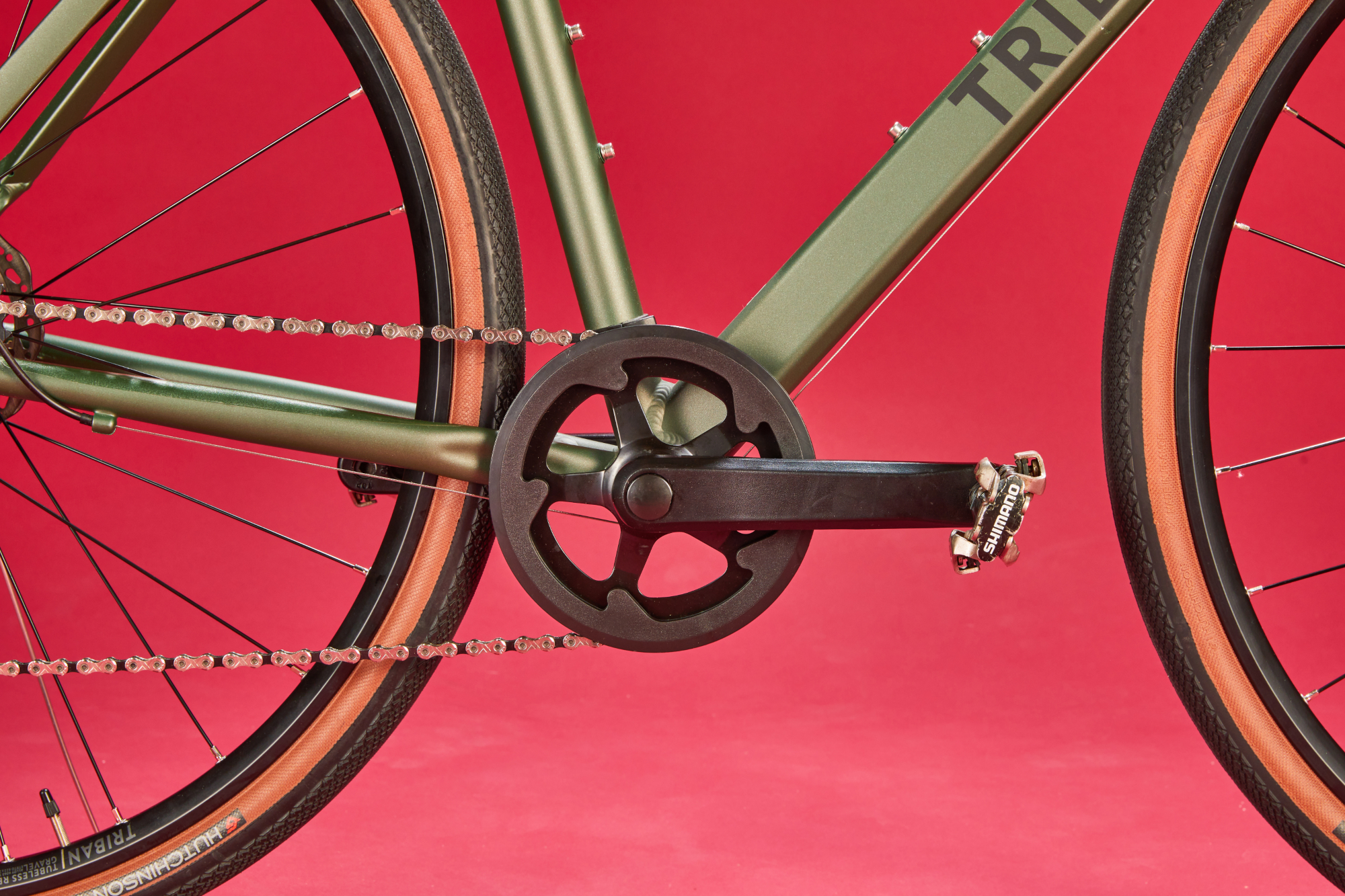
On descending steeper sections, potentially as a function of the head angle, relatively high bar height and the semi slick tyres, it did feel a little skittish at times - especially in the corners.
Essentially, the Triban 120 Gravel Bike is fine for more moderate trails and moderate distances - but if you are looking to push the limits in both or either of those, you’d be better off on a more capable bike.
Regarding its use as a comfy commuter, the tyres did a good job there with the slick centre tread while soaking up the bumps - it felt reasonably fast for a gravel bike of this weight.
The main area that lets it down is the gappy cassette. Covering 11-42t in just 10-speeds leaves some noticeable jumps. Also, more powerful riders will probably find themselves spinning out with the 38x11 top combination. A 42t chainring would be a good investment if you’re using it primarily for this purpose.
Finally, one aspect that was a frustration for both the road and gravel riding was the braking. Despite the Jagwire KEB-SL outer cables - which stopped the brakes from feeling quite as spongy as other models around this price point - the power and modulation were both quite underwhelming.
Potentially swapping out the semi metallic brake pads for something more higher quality and using an organic compound would improve matters. But in general, mechanical calipers that actuate both pads are really what makes the difference.
Triban 120 Gravel Bike: value
At $899.00 / £599, although the Triban 120 Gravel Bike is heavy, not well suited to more technical gravel, longer distance riding and faster commutes, it does still represent reasonable value for money.
For $300 / £300 more, you can get the Vitus Substance V-2 Gravel Bike Sora, which has a double crankset allowing for a wider range of gears and tighter jumps, TRP Spyre mechanical disc brakes which can be really quite good, and just a more modern and smart-looking aesthetic as well.
But obviously, recommending a bike that is between 30 and 50 per cent more expensive is not particularly helpful if $900 / £600 is your hard budget. I’d say it is worth saving up if you can - but if you can’t then there are still a lot of good points to the Triban 120 Gravel bike.
Triban 120 Gravel Bike: spec
- Frame: Triban 120, 6061 T6 aluminium, GRVL geometry, external cable routing, mudguard ready
- Fork: Carbon legs with aluminium steerer, max. Load: 9kg
- Groupset: Microshift XLE 10-speed
- Handlebar: Triban aluminium gravel handlebars, 16° flare
- Wheelset: Triban Tubeless ready wheels
- Tyres: Hutchinson Overide 700x38mm
- Saddle: Triban ErgoFit
- Seatpost: Triban aluminium seat post
- Weight: 11.21kg

Thank you for reading 20 articles this month* Join now for unlimited access
Enjoy your first month for just £1 / $1 / €1
*Read 5 free articles per month without a subscription

Join now for unlimited access
Try first month for just £1 / $1 / €1
Get The Leadout Newsletter
The latest race content, interviews, features, reviews and expert buying guides, direct to your inbox!

After winning the 2019 National Single-Speed Cross-Country Mountain Biking Championships and claiming the plushie unicorn (true story), Stefan swapped the flat-bars for drop-bars and has never looked back.
Since then, he’s earnt his 2ⁿᵈ cat racing licence in his first season racing as a third, completed the South Downs Double in under 20 hours and Everested in under 12.
But his favourite rides are multiday bikepacking trips, with all the huge amount of cycling tech and long days spent exploring new roads and trails - as well as histories and cultures. Most recently, he’s spent two weeks riding from Budapest into the mountains of Slovakia.
Height: 177cm
Weight: 67–69kg
-
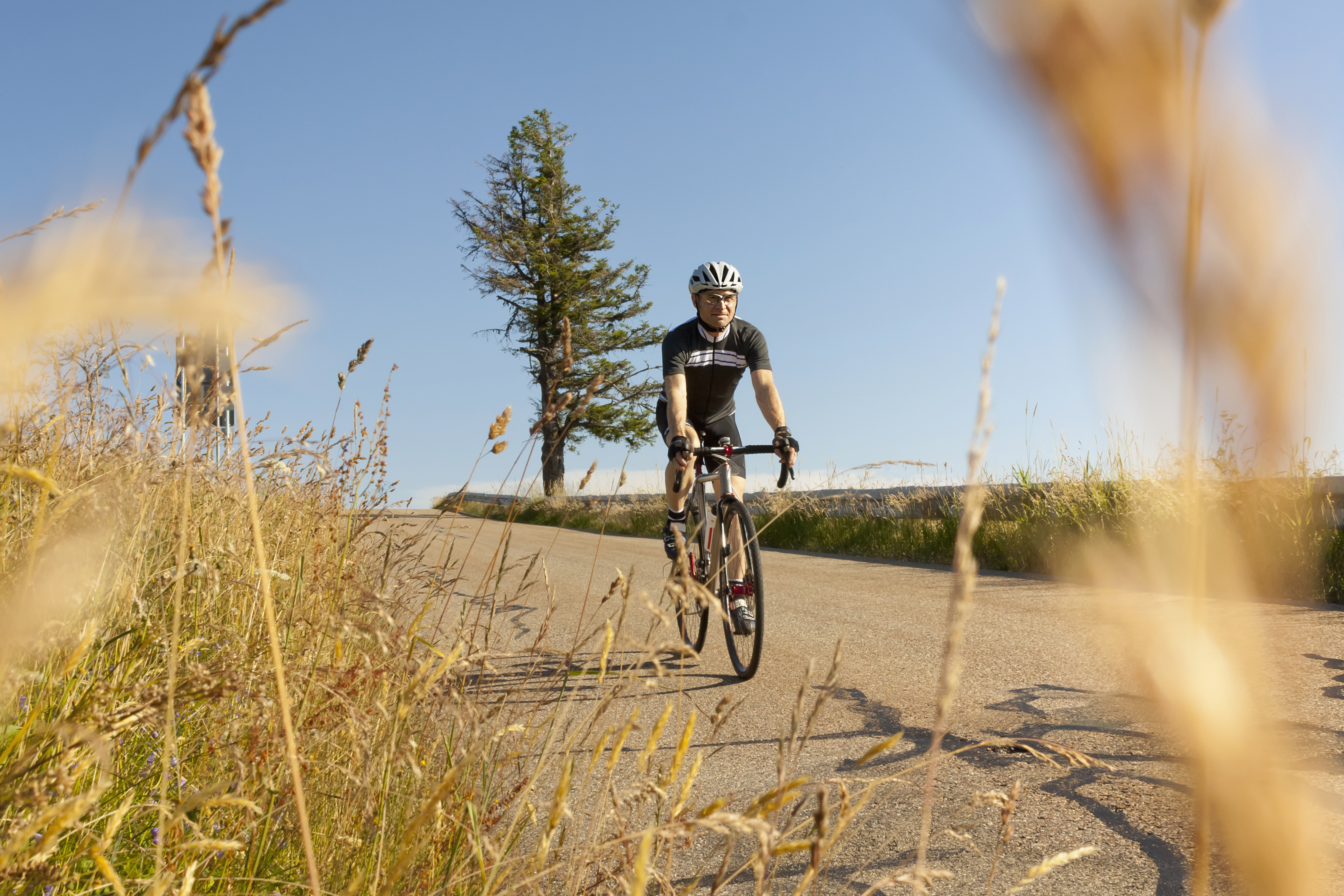 Hayfever and your riding: how to combat it as the pollen strikes
Hayfever and your riding: how to combat it as the pollen strikesExplanations, medications and holistic measures to make your spring and summer riding more enjoyable
By James Shrubsall Published
-
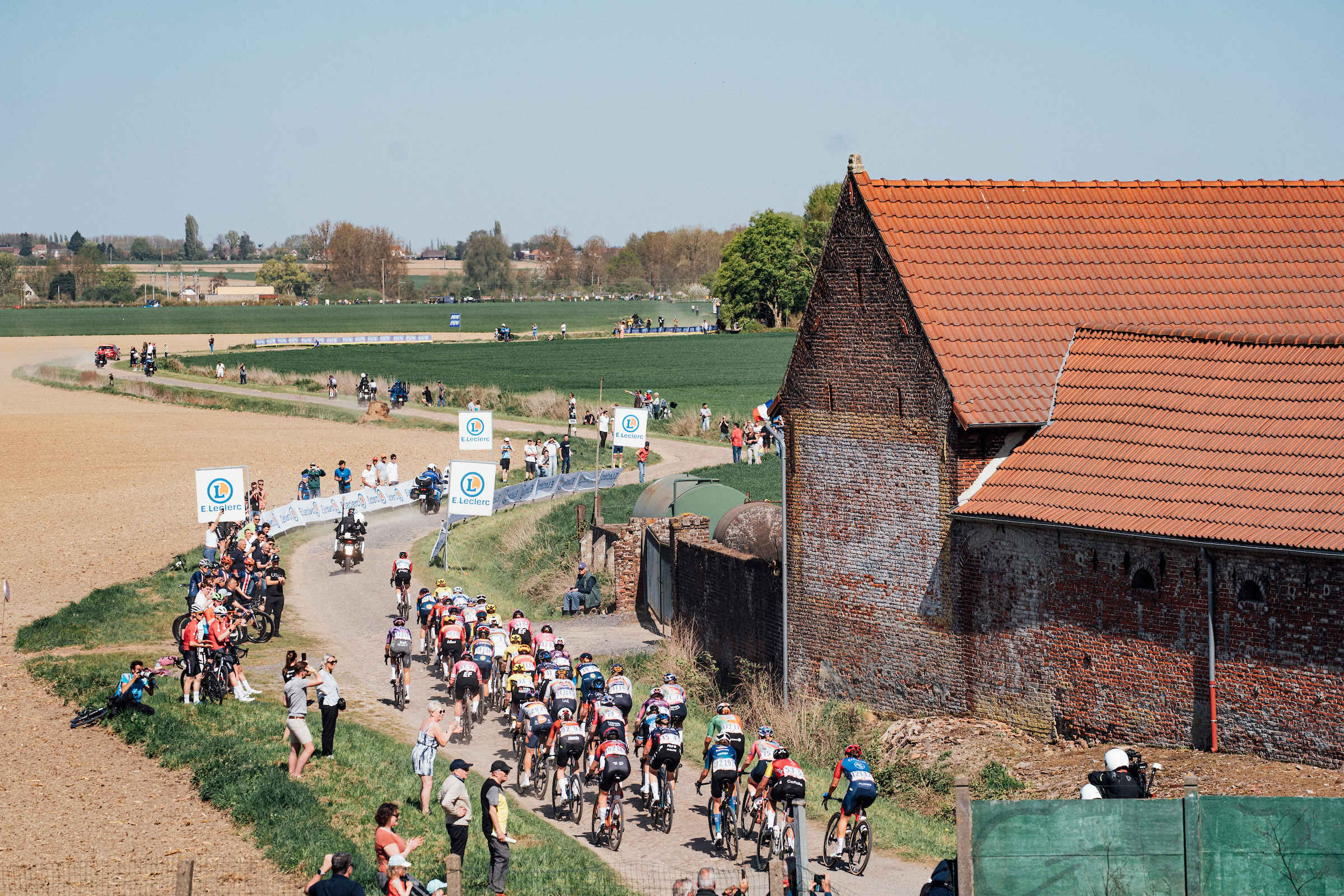 I went to Paris-Roubaix Femmes and was shocked at how it is still treated as secondary to the men’s race
I went to Paris-Roubaix Femmes and was shocked at how it is still treated as secondary to the men’s raceThe women’s version of the Hell of the North is five years old, but needs to be put more on equal footing with the men
By Adam Becket Published
-
 Broken hips, hands, and collarbones: Paris-Roubaix's lengthy injury list lays bare brutality of race
Broken hips, hands, and collarbones: Paris-Roubaix's lengthy injury list lays bare brutality of race"It probably wasn't the best idea to continue," says one of weekend's many wounded riders
By Tom Davidson Published